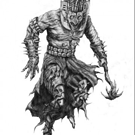This is my debug output:
[0:] Triangle: (-0.5, -0.4999999, 0) (-0.5, 0.5, 0) (-0.5, 0.4999999, 0)
[0:] Triangle: (-0.5, 0.4999999, 0) (-0.5, -0.5, 0) (-0.5, -0.4999999, 0)
[0:] Triangle: (0.5, 0.4999999, 5.960464E-08) (-0.5, 0.4999999, 5.960464E-08) (-0.5, 0.5, 5.960464E-08)
[0:] Triangle: (-0.5, 0.5, 5.960464E-08) (0.5, 0.5, 5.960464E-08) (0.5, 0.4999999, 5.960464E-08)
[0:] Triangle: (0.5, -0.5, 0) (0.5, 0.4999999, 0) (0.5, 0.5, 0)
[0:] Triangle: (0.5, 0.5, 0) (0.5, -0.4999999, 0) (0.5, -0.5, 0)
[0:] Triangle: (0.5, -0.4999999, -5.960464E-08) (-0.5, -0.4999999, -5.960464E-08) (-0.5, -0.5, -5.960464E-08)
[0:] Triangle: (-0.5, -0.5, -5.960464E-08) (0.5, -0.5, -5.960464E-08) (0.5, -0.4999999, -5.960464E-08)
[0:] Triangle: (-0.5, 0.5, -0.9999999) (-0.5, -0.4999999, -0.9999999) (0.5, -0.4999999, -0.9999999)
[0:] Triangle: (0.5, -0.4999999, -0.9999999) (0.5, 0.5, -0.9999999) (-0.5, 0.5, -0.9999999)
[0:] Triangle: (0.5, 0.4999999, 0.9999999) (0.5, -0.5, 0.9999999) (-0.5, -0.5, 0.9999999)
[0:] Triangle: (-0.5, -0.5, 0.9999999) (-0.5, 0.4999999, 0.9999999) (0.5, 0.4999999, 0.9999999)
[0:] Volume: 0.666666567325592
In a box there are 12 triangles and this seem right, but Volume is wrong




